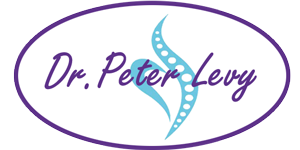What Is NeuroMuscular Reeducation?
Please Call (805) 864-2100 for an Appointment or Walk-In Availability
NeuroMuscular ReeducationSM:
Result-oriented Soft Tissue Work
NeuroMuscular ReeducationSM is a hands-on approach to the evaluation of function and treatment of soft tissue injuries. With 649 muscles in the body and 207 bones, there is an absolute necessity for precise and effective soft tissue work.
Soft Tissue Injury
When an area is injured, whether it’s muscle, tendon, ligament, fascia or some combination of these elements (as most injuries are), the body handles this inflammatory response to trauma through a formation of adhesions of the affected area. What follows is a second grade tissue that is less flexible and poorly vascularized in order to protect the injured areas.
Adhesions
Adhesions will form wherever damage and inflammation have occurred, and they limit both strength and speed of contraction as well as range of motion. Once there is fibrous healing, these adhesions pull us out of balance. As a muscle tendon begins to stretch and encounters an adhesion, the muscle contracts to prevent any further stretching in an effort to protect the injury.
Limited Range of Motion
As a result of an adhesion/scar tissue, the muscles involved are weak and the range of motion is limited. Adhesions can affect areas that are quite small, sometimes just a few muscle fibers, and other times there can be a number of areas scattered throughout a muscle group.
Continue reading below our video…
Dr. Peter Levy: The Nature of Scar Tissue
Freeing the Adhesions
“Freeing the adhesion is the beginning of the healing process” according to Dr. Levy. “Each person has a subtle, frequently unconscious perception of his or her own body. When there is pain and limitation of motion due to an injury, you adapt your body image to fit that perceived limitation. This unconscious mental adaptation can often persist long after the injury has been resolved, and the ‘Reeducation’ part of the NMRSM technique is critical. Without the ‘Reeducation’, patients may persist in favoring the area that was causing them pain. For instance, a patient may often limp for several months after a hip or leg problem has been eliminated, so the most important part of the treatment is in making the patient ‘aware’ of the corrected area so they can adapt their new behavior to their new physical reality.”
The Solution: NMRSM
The “Reeducation” part of the technique is elegant in both its simplicity and efficacy, and patients are generally back to their normal activities in short order. This is accomplished by working each involved joint through the fullest possible range of motion after the NMRSM work, and then sending a patient back to the activity that has been causing him/her the problem as soon as possible to demonstrate that the problem has been resolved.


